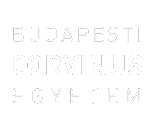Regő Farkas, Berta (2021) Presidential Race on the Visual Battlefield: A Visual Rhetorical Analysis of the 2020 United States Elections. BA/BSc szakdolgozat, BCE Kommunikáció és Szociológia Intézet, Kommunikáció- és Médiatudomány Tanszék. Szabadon elérhető változat / Unrestricted version: http://publikaciok.lib.uni-corvinus.hu/publikus/szd/Rego_Farkas_Berta.pdf
|
PDF
- Requires a PDF viewer such as GSview, Xpdf or Adobe Acrobat Reader
771kB |
Szabadon elérhető változat: http://publikaciok.lib.uni-corvinus.hu/publikus/szd/Rego_Farkas_Berta.pdf
Absztrakt (kivonat)
The political traditions and election campaigns of the United States of America are events of global concern every four years. One of the biggest events of 2020 was the 59th quadrennial presidential elections of the USA, held on Tuesday, November 3. As usual, the candidates did everything in their power to construct a favorable political image of themselves and put through their political agendas in the most effective way. They provided carefully constructed political messages in forms of verbal and visual symbols, to spread their ideologies and generate identification with their visions. The present thesis strove to provide a holistic view of political rhetoric and image making within the campaign communication of the latest U.S. presidential elections. In order to present a complex approach, the analysis payed special attention to the visual campaign films (so called convention films) of the two candidates in the realm of the verbal, visual and musical rhetorical dimensions. The research aimed to answer the following research questions: RQ1: What are the typical characteristics of a good political campaign, focusing on the United States of America? RQ2: What are the traceable similarities and differences between the verbal and visual campaign strategies of the Republican and the Democratic Party? RQ3: What means of ideology do the Parties use, in order to achieve identification between their candidates and the public? RQ4: What is the role of musical rhetoric with regard to the emotional effects on the audience? To gain insights to the theoretical foundation of the topic in question, the author used selected works of Aristotle (1355b), Aczél (2005, 2009, 2012), Perelman (2018) or Tindale (1999), exploring the fields of rhetoric, political campaign communication and its connection to advertising, visual rhetoric and its usage in campaigns, as well as the four-pillar model of Blakesley (2004), completing it with other dimensions of verbality and music. Having explored the relevant literature available, the present essay used a combined methodology of qualitative content analysis and semi-structured qualitative interviews with two distinguished professionals of the field, known both from the academia and from the media: Dr Ágoston Sámuel Mráz (Assistant Professor at ELTE University and founder of the Viewpoint Institute) and Dr Réka Várnagy (Associate Professor at Corvinus University of Budapest). After conducting both analyses, the author of the thesis managed to shed light on the verbal and visual rhetorical strategies the latest U.S. presidential election campaigns used and gained a better understanding of political image making and the art of persuasion in film rhetoric. It is also believed that a compound work has been born, nevertheless, multiple other directions of analysis can be implemented in the future in the realm of rhetoric with a focus on static images, visual tropes, verbal rhetoric and persuasion or argumentative fallacies, amongst many more.
| Tétel típus: | BA/BSc szakdolgozat |
|---|---|
| Témakör: | Média és kommunikáció Politikatudomány |
| Azonosító kód: | 14793 |
| Képzés/szak: | Communication and Media Science |
| Elhelyezés dátuma: | 12 Szept 2022 10:30 |
| Utolsó változtatás: | 12 Szept 2022 10:30 |
Csak a repozitórium munkatársainak: tétel módosító lap

